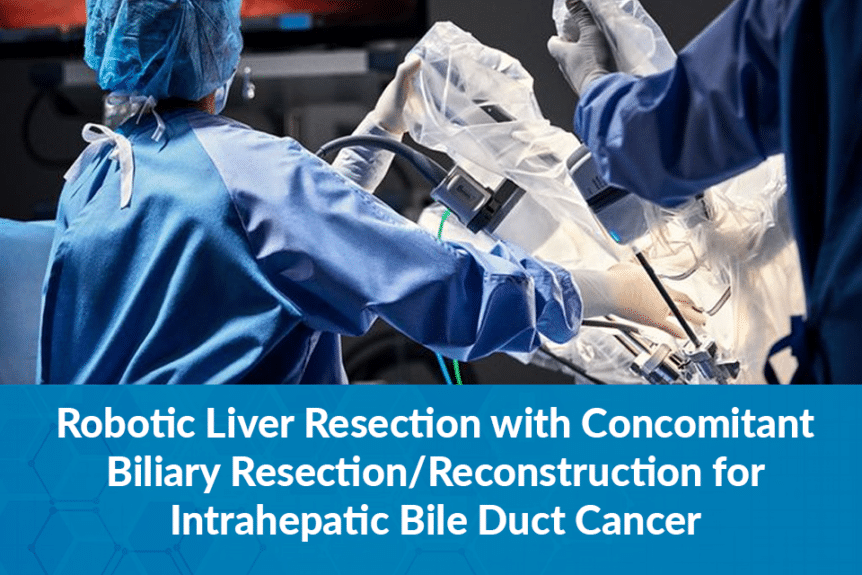
Robotic Liver Resection with Concomitant Biliary Resection/Reconstruction for Intrahepatic Bile Duct Cancer
In March 2022, the International Hepatopancreatobiliary Association (IHPBA) Annual 2022 Meeting was held in New York City, where liver surgeons gathered from around the world. The IHPBA meeting is conducted every two years and it was attended by around 800 surgeons bringing the most current innovations, experience, technical tips, and tricks of liver surgery and liver transplantation. The vendors for liver surgery equipment were also present supporting the largest international meeting. IHPBA is the meeting point of liver surgeons from Asia, America, Europe, and Africa. The previous 2020 IHPBA meeting that was supposedly held in Melbourne Australia was canceled due to the Covid pandemic. The choice of location for this prestigious meeting mimics the selection process for Olympic Games.
Dr. Sucandy had been attending the IHPBA meeting since 2016 where the meeting was held in Sao Paolo, Brazil sharing techniques and outcomes of open and minimally invasive liver and pancreas surgery. This year, Dr. Sucandy was invited to share his experience in performing robotic liver and biliary resection for perihilar cholangiocarcinoma (bile duct cancer located near the main bile duct) in New York City.
In this lecture, Dr. Sucandy explained the technical preparation and detailed steps of the resection in an 80-year-old man. The left side of the liver had to be resected in conjunction with resection and reconstruction of the bile duct due to cancer involvement. The operation was performed using the Da Vinci robotic technology for the best precision and safest outcomes. After the liver and main bile duct were removed, the specimen was sent to a pathology lab to examine the resection margins. The intention of this was to make sure that the cancer was in fact complecalltoy removed. Leaving any parts of cancer behind creates tumor local recurrence. Additionally, all the associated lymphnodes around the liver were also resected and examined for best cancer clearance and cure.
Once the specimen was removed and resection was completed, the bile duct reconstruction then began. Dr. Sucandy brought a loop of small bowel up toward the liver to reconstruct the bile duct. A fine connection was created between the remaining bile duct on the right side to the intestine. This is the Achilles tendon of this operation where such high technical details and precision are needed. Poorly constructed connection leads to bile leak and this in turn can create problematic biliary narrowing (stricture) in the future. This can be a source of major issues for the patient after the liver resection, requiring multiple re-interventions and sometimes re-operation. In laparoscopic liver surgery, this part is the most feared step by surgeons due to the technical difficulty in performing this bile duct connection laparoscopically. As an expert robotic surgeon, Dr. Sucandy performed this kind of procedure routinely with excellent short- and long-term outcomes.
The lecture was attended by more than 500 experienced surgeons and it was very well accepted. Lots of discussions originated from the lecture, which reflected a high interest in learning robotic liver surgery. Three of the International Liver Surgery Association (ILLS) Presidents were all present in the room as audience and/or co-speaker.
Dr. Sucandy explained that this type of advanced liver surgery will be the future where robotic technique becomes the standard of care. Currently, nearly all advanced liver resections of this kind are performed via a traditional open approach. Not many centers in the US are offering this resection due to the technical complexity and the need to have adequate support for potential complications.
We are happy to be able to offer such a complex operation for patients in need. We have performed almost 25 of these operations for patients from around the United States, among more than 600 liver surgery performed since 2016. Many of them even came from out of state to Tampa to receive such robotic liver surgery.

